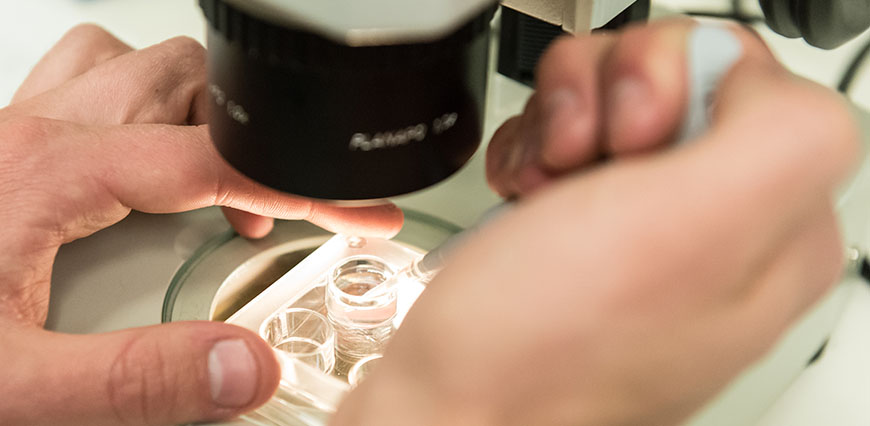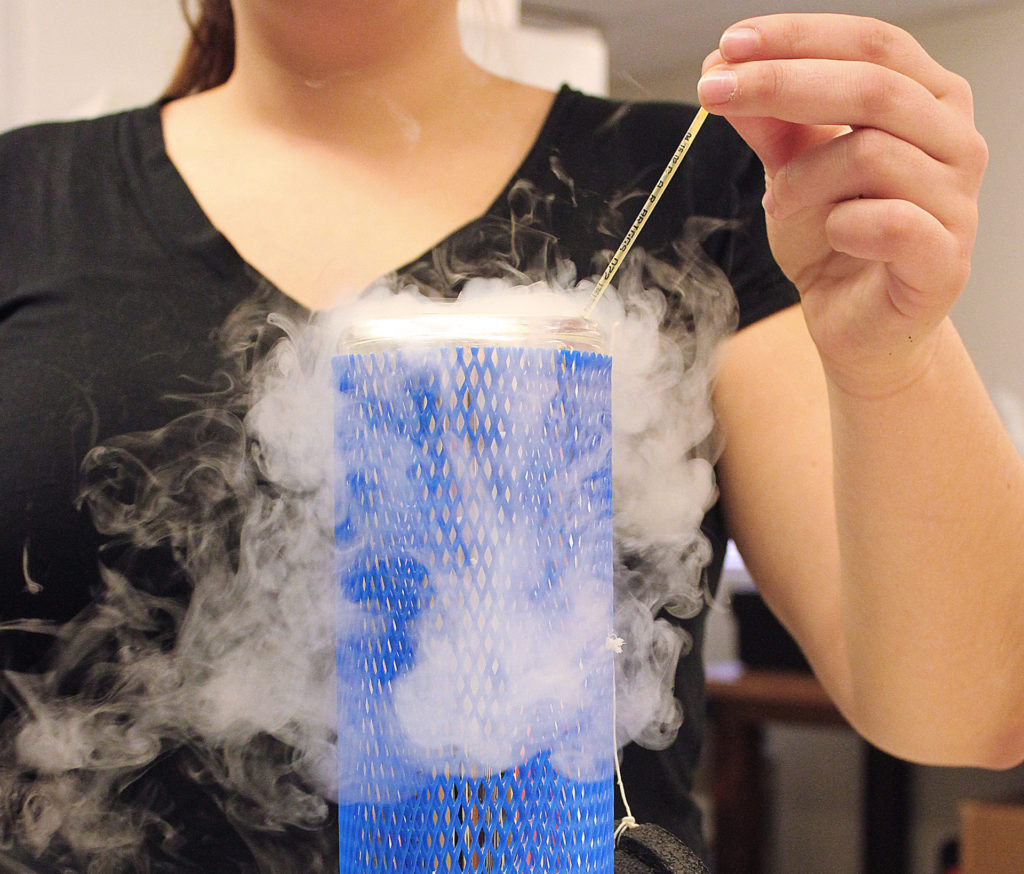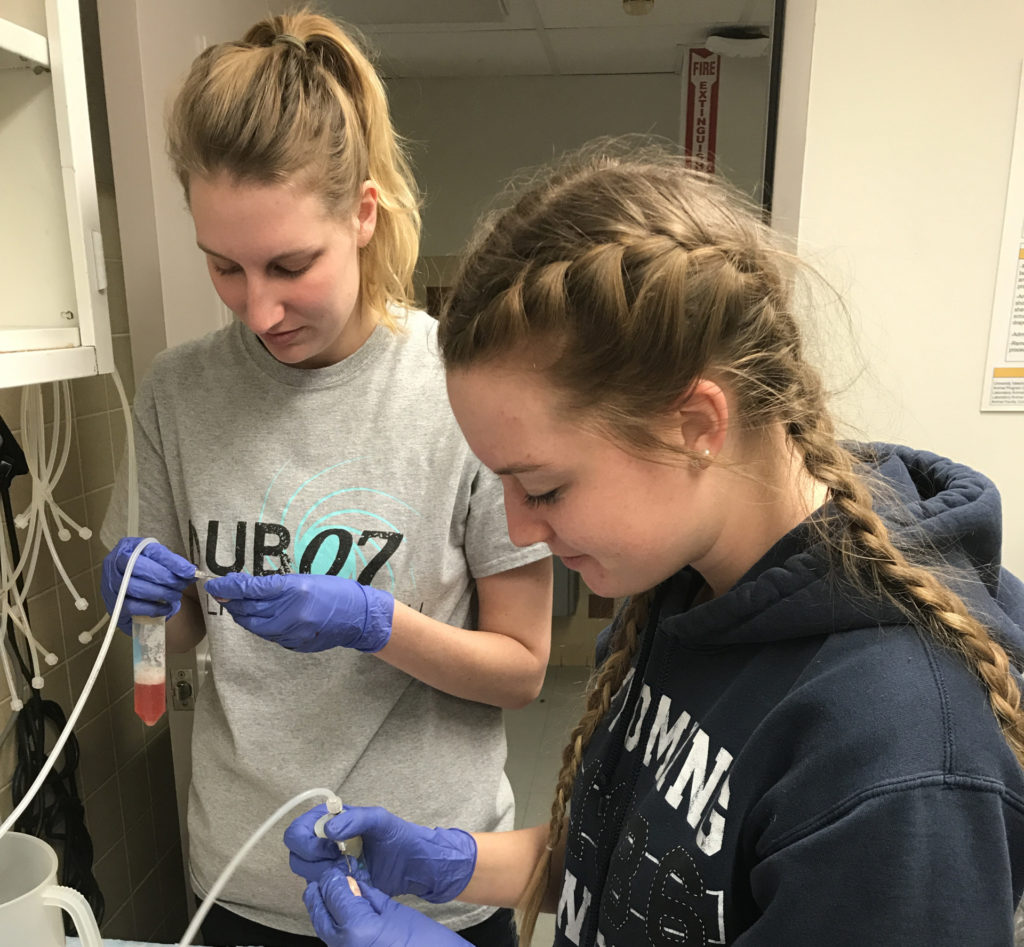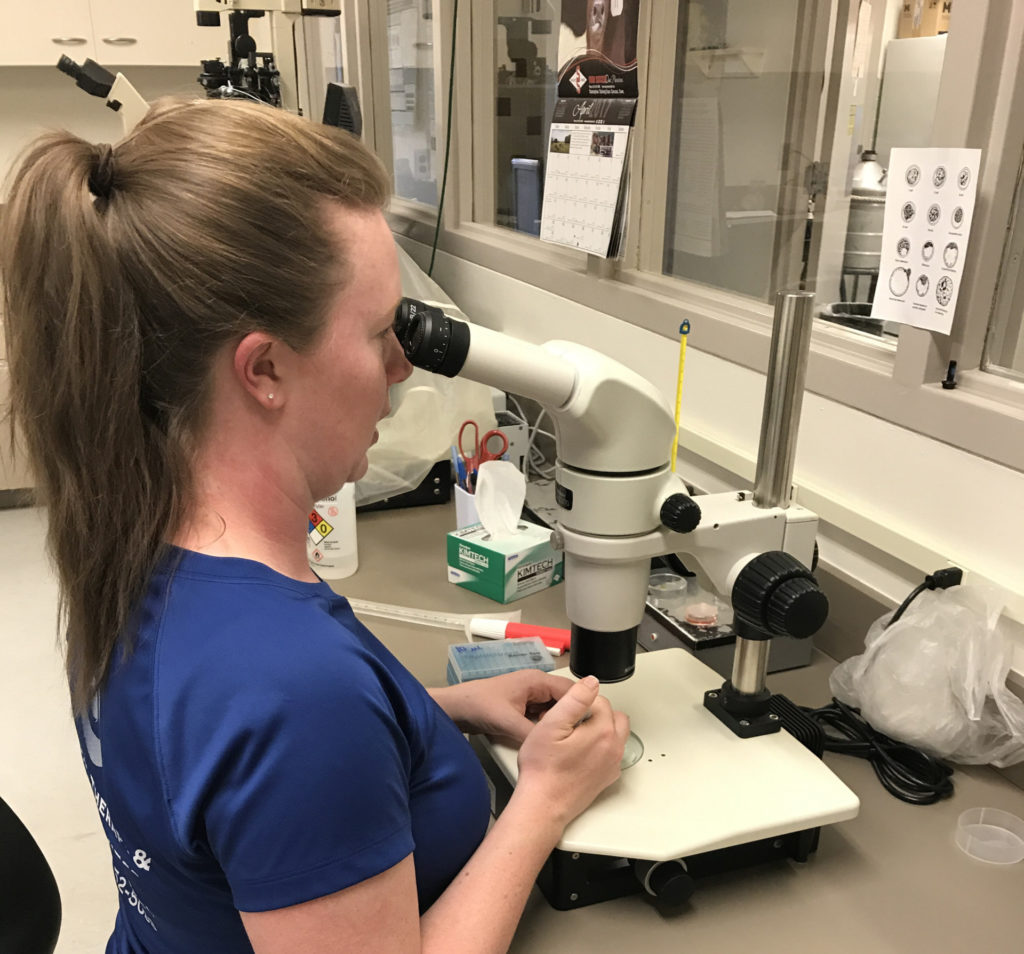

Infertility is considered a global public health issue, and advances in the field of reproductive medicine have led to an increased need for trained experts.
Four biomedical sciences master’s students in the Assisted Reproductive Technologies program are interning with the Colorado Center for Reproductive Medicine fertility clinic this summer to apply the skills they learned, such as oocyte collection, in vitro fertilization, embryo development and cryopreservation, in a real-world setting.
Paige Roovers, Andrea Kallweit, Jennifer Knoche and Dierde Logsdon were selected to intern at the clinic after participating in a competitive application process. They will graduate with master’s degrees — and a leg up in a growing job market — at the end of the experience.
“Human infertility is a really competitive field and it moves very quickly,” said Rebecca Krisher, research director at the clinic and an affiliate faculty member in the Department of Biomedical Sciences. “There’s a great need for embryologists in this rapidly growing field, and it’s important to stay on the cutting edge of the science of infertility.”
Jumping right in

The students will spend half of the six-week internship in the center’s research lab learning protocols, assisting with various projects and running their own experiments. “It’s exciting to be contributing to research that may be used by embryologists across the country to help them treat patients with infertility,” Logsdon said.
The other half of the internship is in the center’s clinical in vitro fertilization (IVF) lab, where the interns primarily observe how the entire IVF process is carried out.
“The Colorado Center for Reproductive Medicine is one of the best human infertility clinics in the country,” said Jennifer Barfield, assistant professor in CSU’s Department of Biomedical Sciences and co-director of its Assisted Reproductive Technologies program. “Our partnership with them provides a great opportunity for students to be trained by experts in the field.”
The unique, one-year program, launched in 2013, culminates in an internship and provides students with in-depth training in various aspects of assisted reproduction, preparing them for careers in human or animal embryology as well as graduate and professional school. Barfield and Jim Graham, professor in the Department of Biomedical Sciences and director of the program, strive to equip students with a strong foundation of technical and lab skills they can take with them to their internships and beyond.
“The students are doing great so far,” Krisher said. “They are very well prepared, very interested in what they’re doing, and excited to be here. It’s been a mutually beneficial collaboration that we hope to continue in the future.”
Responding to a growing need

The Assisted Reproductive Technologies program at CSU is the brainchild of George Seidel, distinguished professor emeritus at the Animal Reproduction and Biotechnology Laboratory. During his many years of educating students, it became clear that there was a need for more professionals trained in reproductive technology techniques. After Seidel got the idea off the ground, Barfield and Graham ran with it. Twenty-four students will enter the growing program’s fourth class this fall, making it the largest class to date.
“There are a lot of jobs in the field of assisted reproduction and many different routes students can take,” Barfield said. “Some go on to work as embryologists in the human or animal industry and others go to veterinary or medical school. A lot of our students discover which direction they’d like to go in while in the program.” Of the 22 students completing internships this year, 12 are working in human fertility clinics or labs, and the others are working in animal embryology labs, zoos and federal labs.
For the four students spending their summer at the fertility clinic, the internship has allowed them to experience firsthand what a career in a human IVF entails.
“The most rewarding part is when we can go to a patient with good news and see how happy it makes them,” Roovers said. “What’s most exciting to me about going into this field is giving people the opportunity to have a healthy family and making a difference in their lives.”